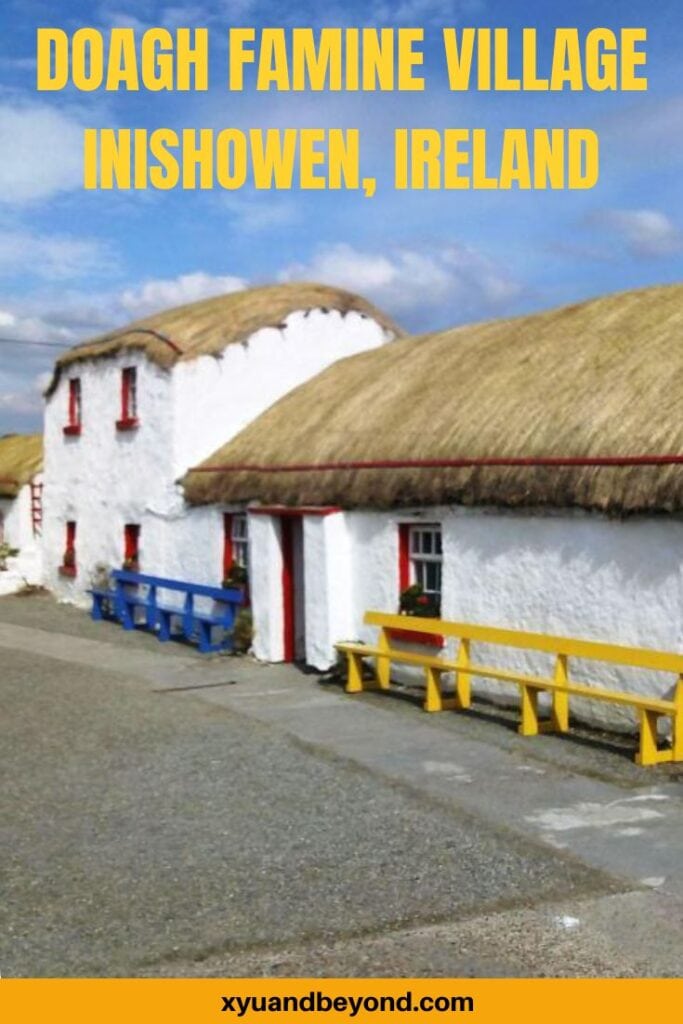Doagh Famine Village Attraction in Inishowen Donegal 2024
The Doagh Famine Village is located in picturesque County Donegal, in the Inishowen Peninsula near Ballyliffin on the Wild Atlantic Way. It is a humorous informative living museum that offers visitors a unique insight into the devastating era of the Great Famine and the Irish way of life. The Famine Village outdoor museum tells the story of an Irish family and their subsistence way of life on Doagh Island from the 18th century to the present day.
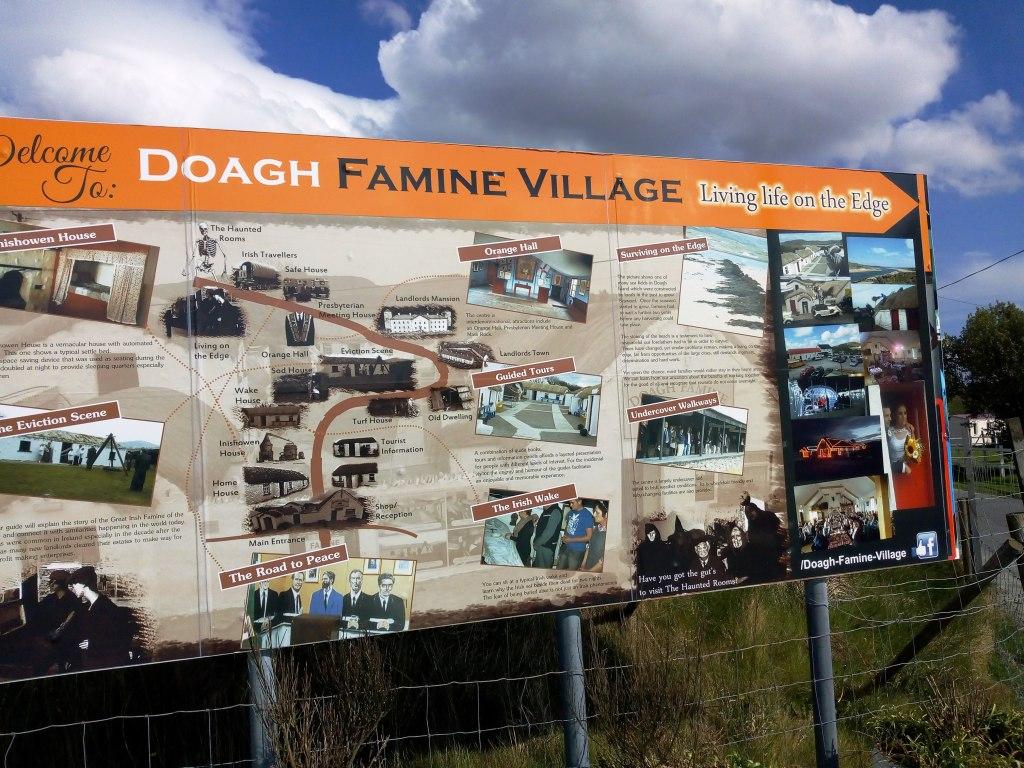
The Village is privately owned by Pat Doherty and his family and was built around the Cottage that Pat grew up in. The Village has no public funding and Pat and his family are the tour guides. A visit here helps explain the road to peace in Northern Ireland, Ireland in the ‘Celtic Tiger’ years and the present-day Irish culture.
Some reviews have called the Village ‘cheesy’ and ‘tacky’ but it is a wonderful introduction to much of Irish history and educates folk on the people of Ireland including the Irish travellers.
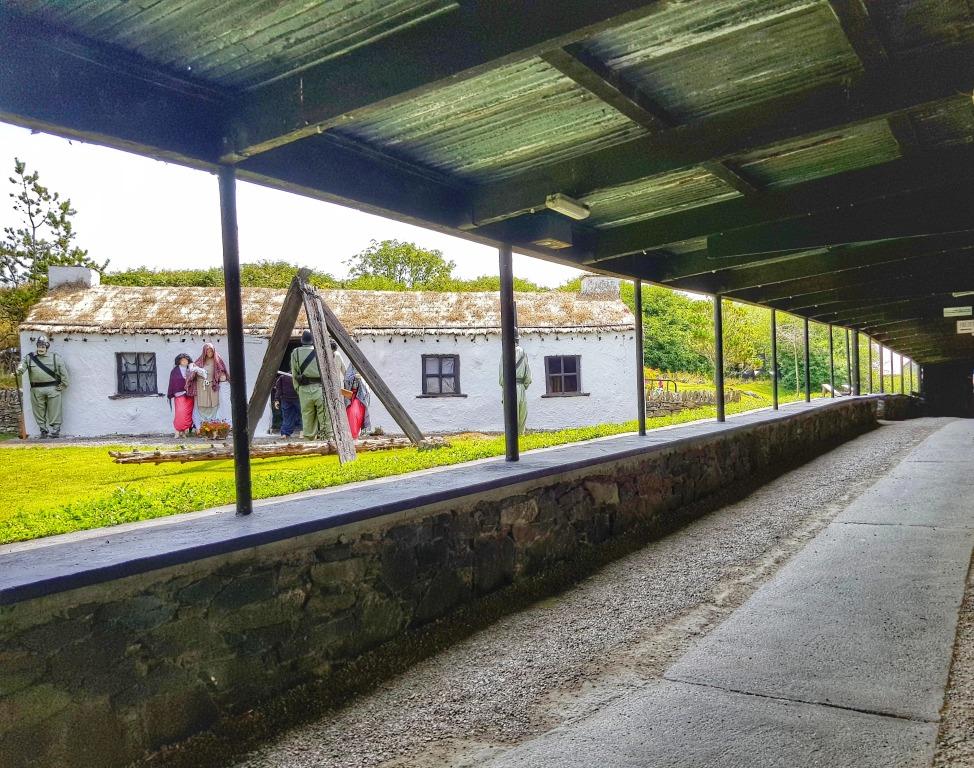
Some of the Famine Village’s buildings – such as the Orange Hall, Presbyterian Meeting House, Mass Rock and Hedge School and a Republican Safe House – depict the diverse history and culture of this corner of the Inishowen peninsula.
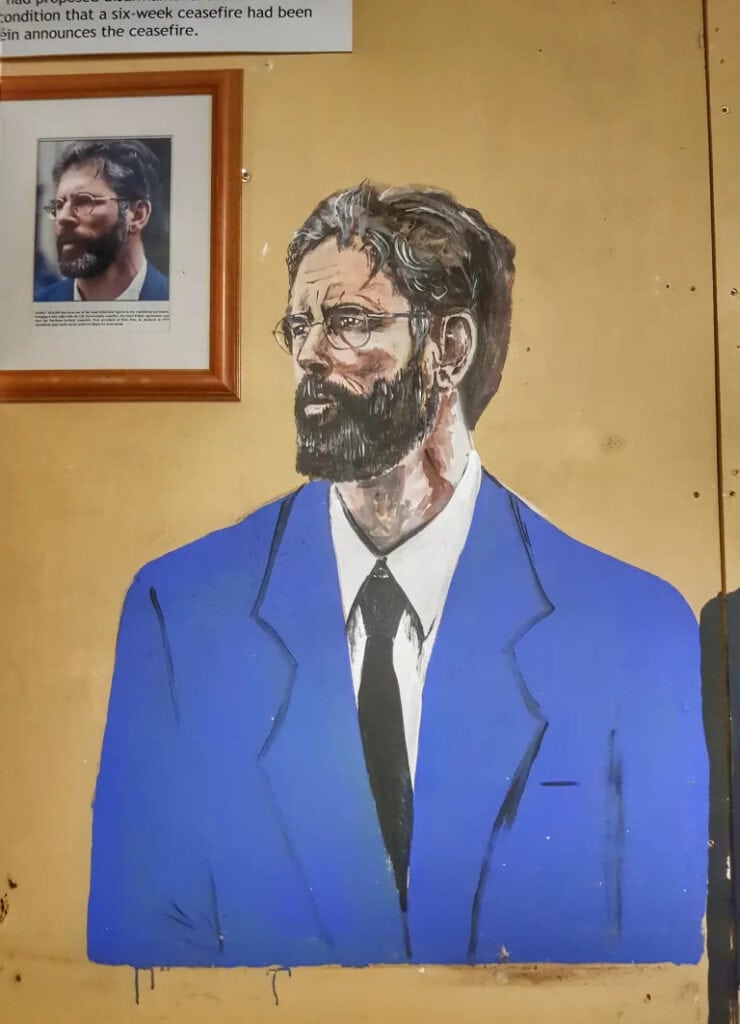
Other buildings house information on the travelling community’s culture and other Irish traditions such as food, cures and the ‘Irish Wake’, a traditional send-off for the dead.
Visiting Doagh Famine Village on the Inishowen Peninsula
The Doagh Famine Village contains a wide variety of buildings and life size dioramas of the homes inhabited by the Irish as well as horrific eviction scenes and even the Irish Travelling community. This immersive village takes visitors back in time, allowing them to experience firsthand the harsh realities faced by life in Ireland during a period of immense hardship. The Doagh Famine Village tells the story of a Donegal family and community living on the edge of Donegal and surviving the great famine of the 1840s right up to the present day.
Through a combination of reconstructed dwellings, original thatched cottages, guided tours, and interactive displays, and poitin tasting Doagh Famine Village aims to tell the story of Irish life from the great famine and educates and raises awareness about Irish history and thought-provoking scenes, while also highlighting the resilience and spirit of its people.
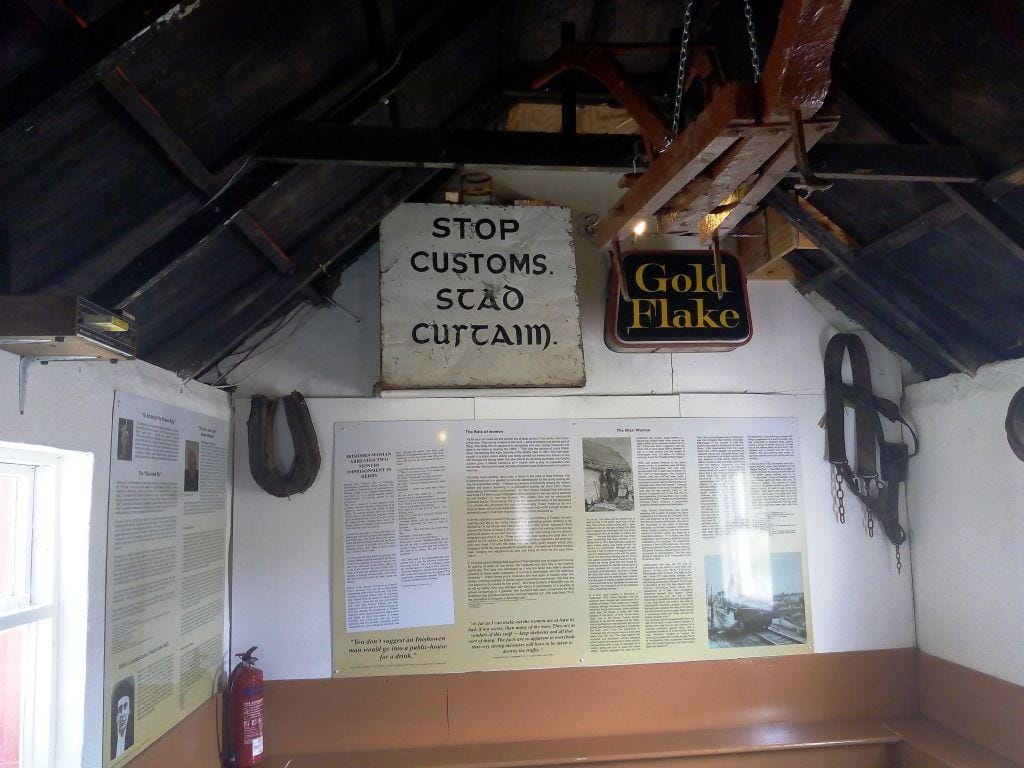
How to get to Doagh Famine Village
Doagh Famine Village, Donegal is only 35 mins from Derry and 60 mins from Letterkenny, but you will need to rent a car to get there.
How much are the tickets for the Doagh Famine Village Village? Ticket prices are Adults €12.50pp. Children under 16 €6.50pp. Children under 4 are free.
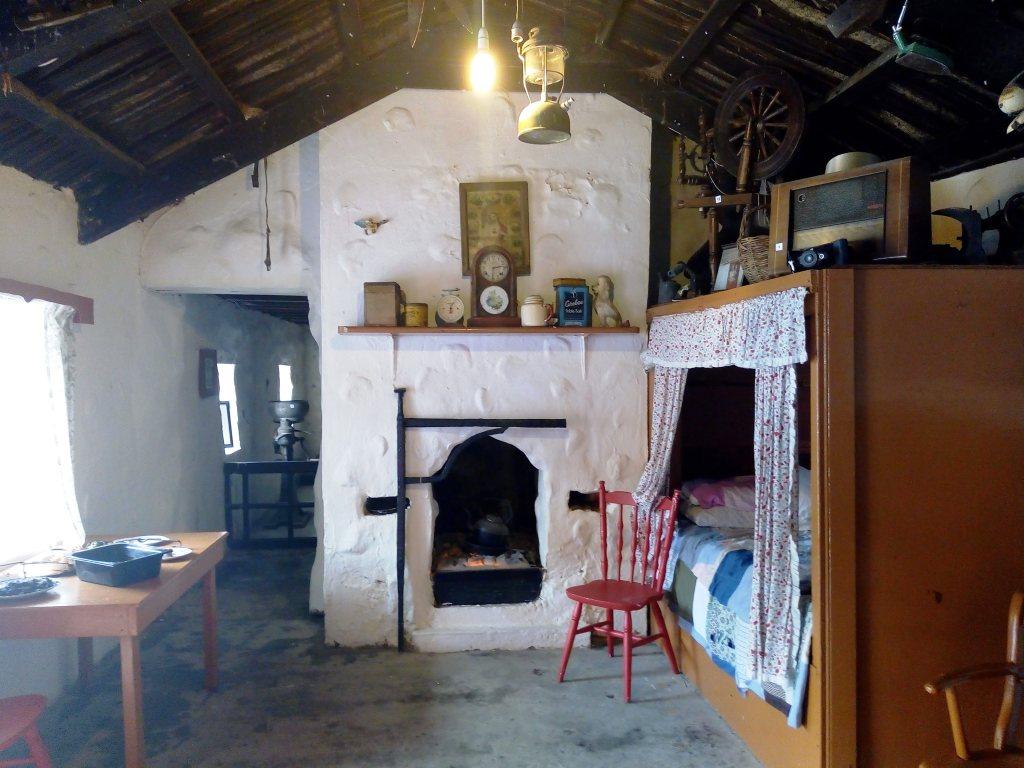
When is Doagh Famine Village Open?
The Village is open from 17th March to 12th October, 7 days a week from 10 am until 5 pm.
There are Guided tours throughout the village from 10.30 am. Tours last from 30 to 45 minutes. Last tour 4.15 pm.
There is FREE parking with ample spaces for all vehicle types and a lovely café with stunning views across the bay to Malin Head.
The Great Hunger – The Irish Famine
The Great Irish Famine, also known as the Great Hunger, was a catastrophic event that had a profound impact on Ireland’s population and culture. Lasting for nearly a decade, the famine resulted from a devastating potato blight that destroyed the primary food source for the majority of the Irish population, which heavily relied on potato crops.
The failure of the potato harvests, combined with British colonial policies and inadequate relief efforts, led to widespread starvation, disease, and mass emigration.
Things to see at the Doagh Famine Village
Located near the village of Doagh, the Doagh Famine Village is an open-air museum that faithfully recreates the living conditions and experiences of Irish people during the famine era up to the present day and the Irish Peace Accord.
The village comprises a series of authentic thatched cottages, farmhouses, and outbuildings, each meticulously furnished and adorned with period artefacts. These dwellings provide a tangible glimpse into the daily struggles faced by families during that time.
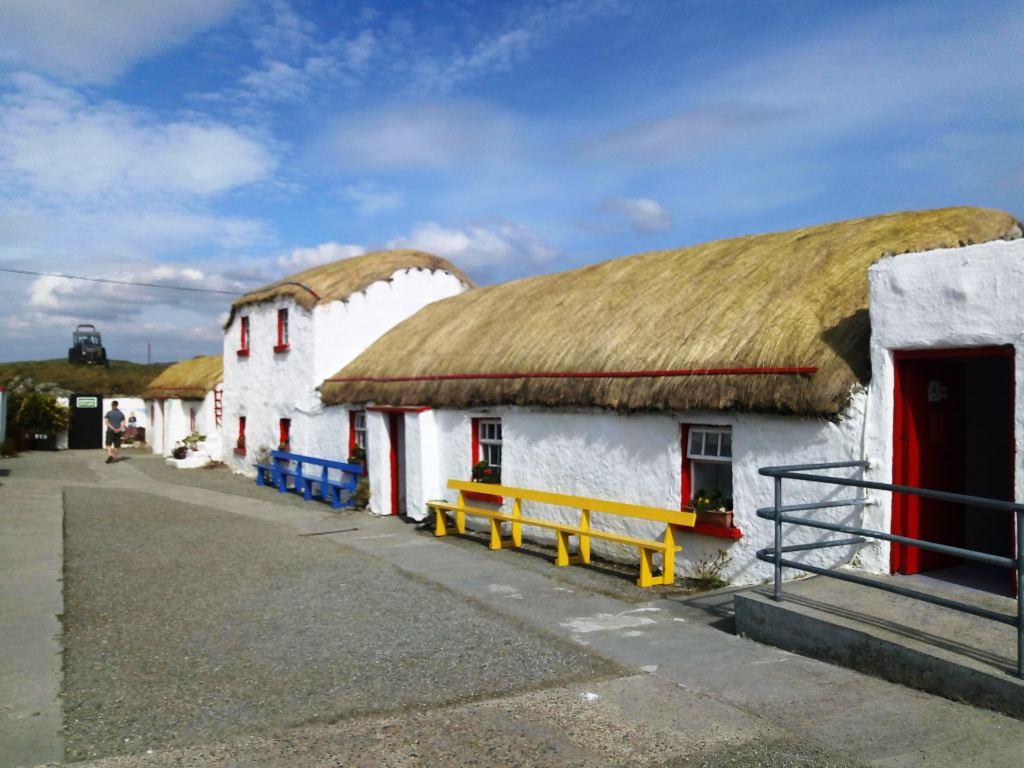
Visitors to the Doagh Famine Village can take guided tours led by knowledgeable guides who passionately share stories and insights into the lives of those affected by the famine.
The guides vividly describe the hardships faced by families, the social and economic challenges, and the profound impact of the famine on the Irish population. This personal touch helps visitors connect emotionally with the past and fosters a deeper understanding of the tragedy.

Distilling Poitin
Interactive exhibits are an integral part of the Doagh Famine Village experience. Visitors can learn all about the history of Poitin, how it is made and actually taste and purchase local Poitin.
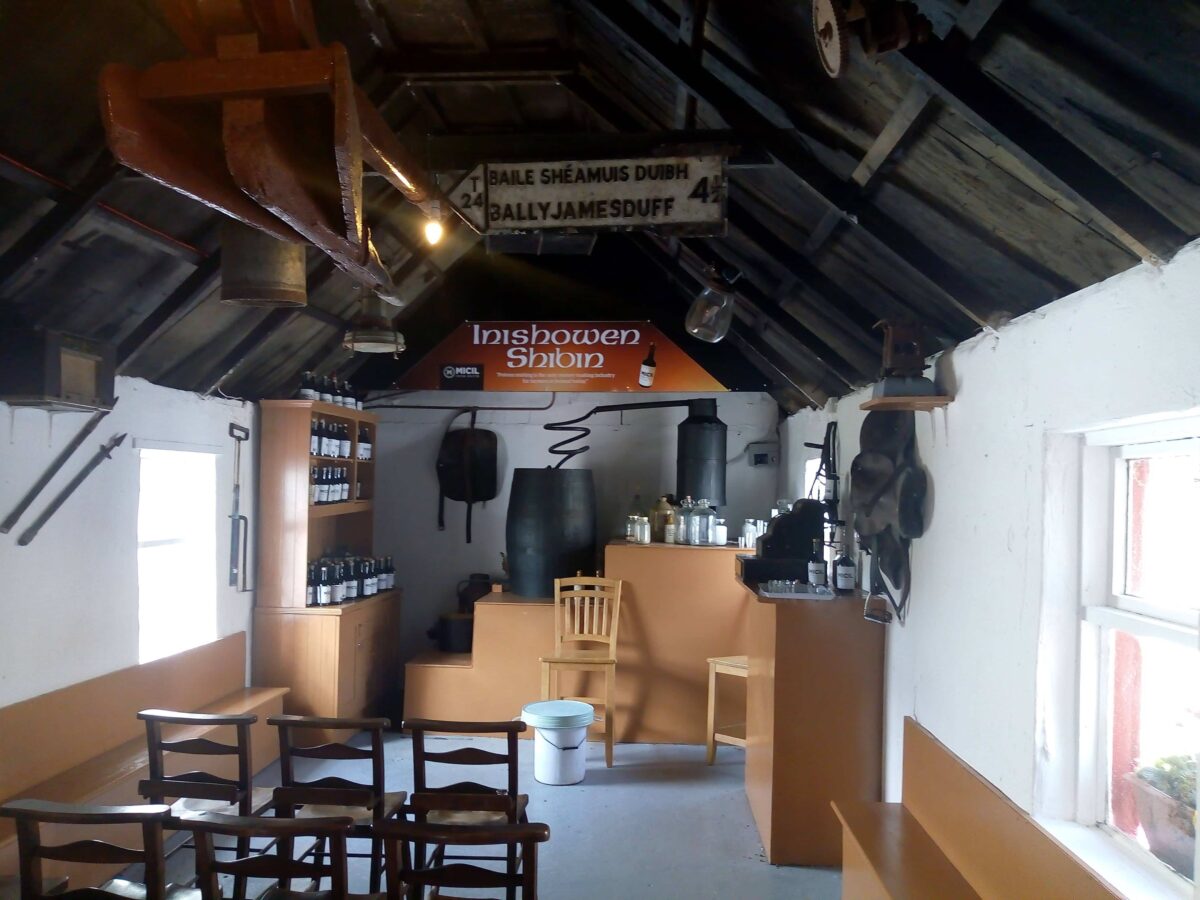
Irish Wake
A display that explains the history and cultural reasons for the Irish Wake a traditional send-off for the dead.
Irish wakes are a celebration of life a last celebration of the dead person’s life. Friends and family gather around the dead ensconced in a coffin in the biggest room in the house and pay their respects. The name “wake” comes from the fact that back in the day unknown diseases ravaged the countryside causing some to appear to be dead. During the ‘wake’ the person who was presumed dead would awaken from the dead. For this reason, a traditional wake involves the body being in its home for at least a night.
IRA Safe House
The IRA Safe House was inspired by a Republic Prisoner Eddie Gallagher. The Safe House is an example of the secret places used by the IRA when on the run from the British Army and the Northern Ireland Police Force.
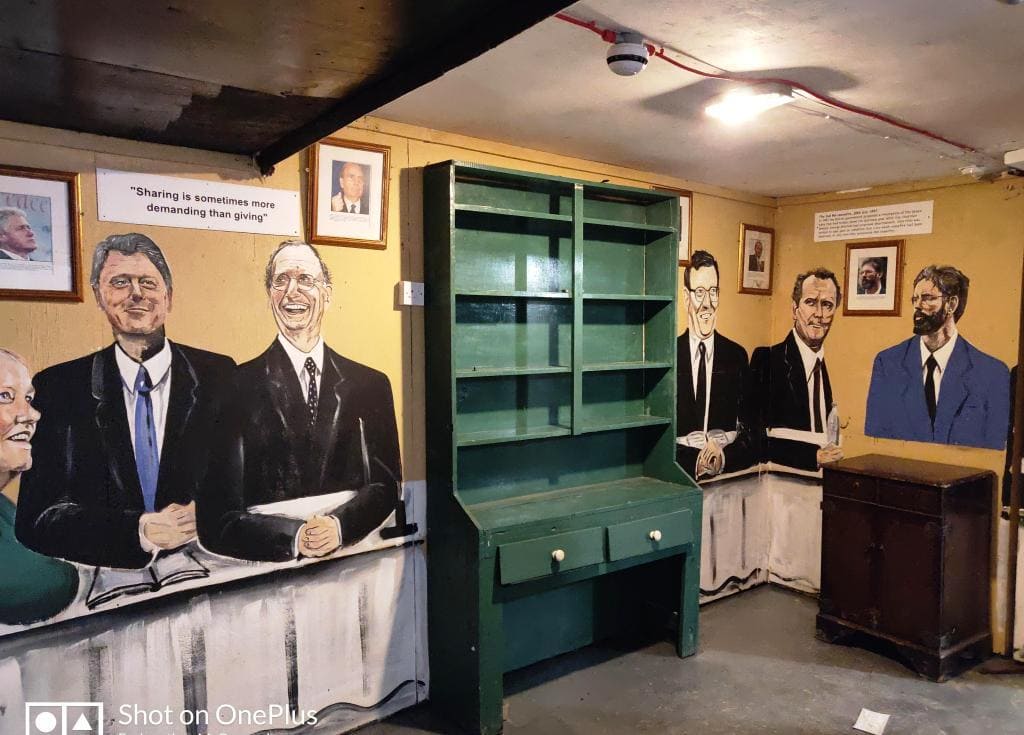
There are seven rooms that you have to navigate your way out of. In the safe house, you’ll see displays on the hunger strikers, and other essential participants in the Troubles and the Peace Acord including Mo Mowlam, John Hume, John Major, Albert Reynolds, Bertie Ahern, Ian Paisley, Gerry Adams, Martin McGuinness and the Queen.
Presbyterian Meeting House
The Presbyterian Church and its parishioners suffered persecution and began to meet up in such places as barns and forges. They called their informal places of worship ‘Meeting Houses’.
Irish Traveller Culture
The exhibit on Traveller culture and history is given just as much space as any of the other important aspects of Irish society. Traveller history is not taught in schools and colleges in Ireland and it is rare to see this history being told in museums, galleries and schools.
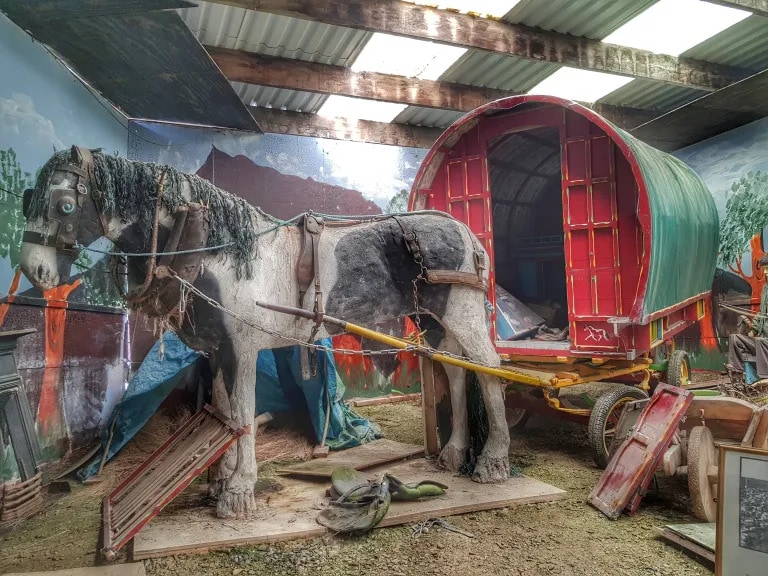
The Travellers are Ireland’s only indigenous ethnic minority and it is remarkable that it is showcased here at Doagh Famine Village. The information on Travellers was curated by Traveller organizations and travellers themselves. This part of the museum honours a community who are most often depicted in a negative light when they are included.
Mass Rock and Hedge School
Catholics too faced persecution and took to the outdoors to practice their faith. Mass rocks are still to be found scattered throughout the countryside as a reminder of a time when Mass was said in secret. The Mass rock became the altar and the Hedge School is where the children were educated in Catholic dogma.
The Oyster Exhibit
Pat Doherty from the Doagh Famine Museum said, “The Doagh Famine Museum tells the story of how local people adapted and survived as the environment around the local area changed over the years and oysters are a key part of this narrative. The exhibition shows how oysters were widely available on the shores in famine times but locals could not avail of this food source as control of the fisheries was usually enforced by the local landlord. These oysters were then exported to markets in England and overfishing in the 1800s then resulted in them becoming a little-known luxury”.
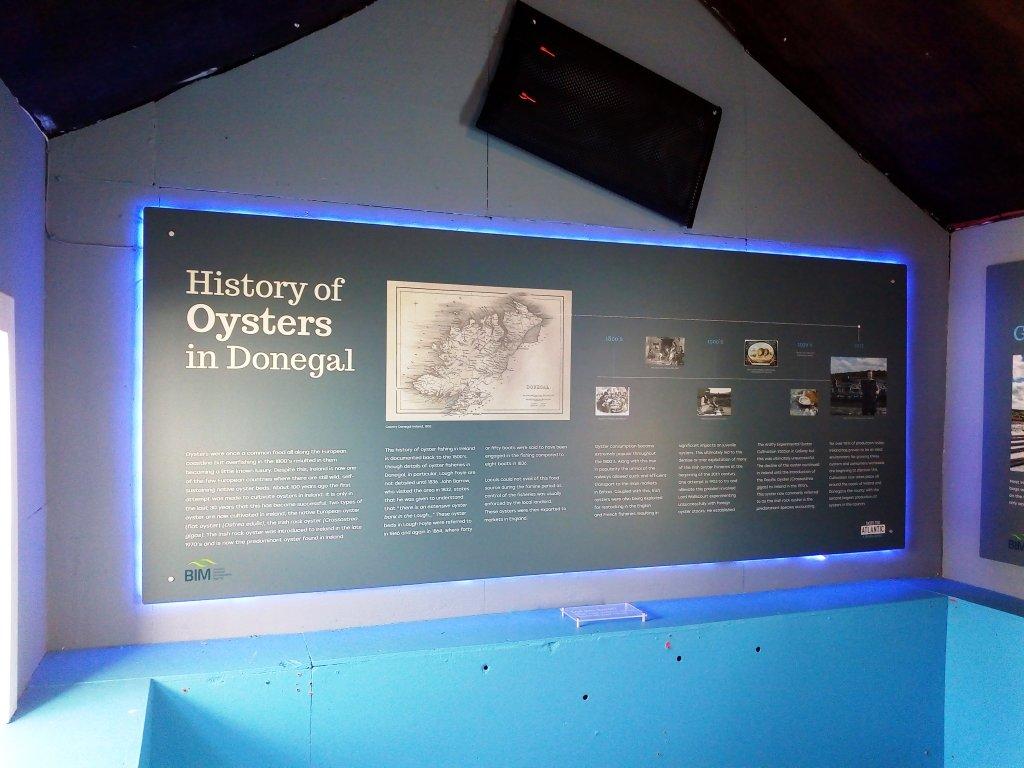
The Eviction
Shows the eviction of a family from their home. A battering ram is ready to knock down the walls.
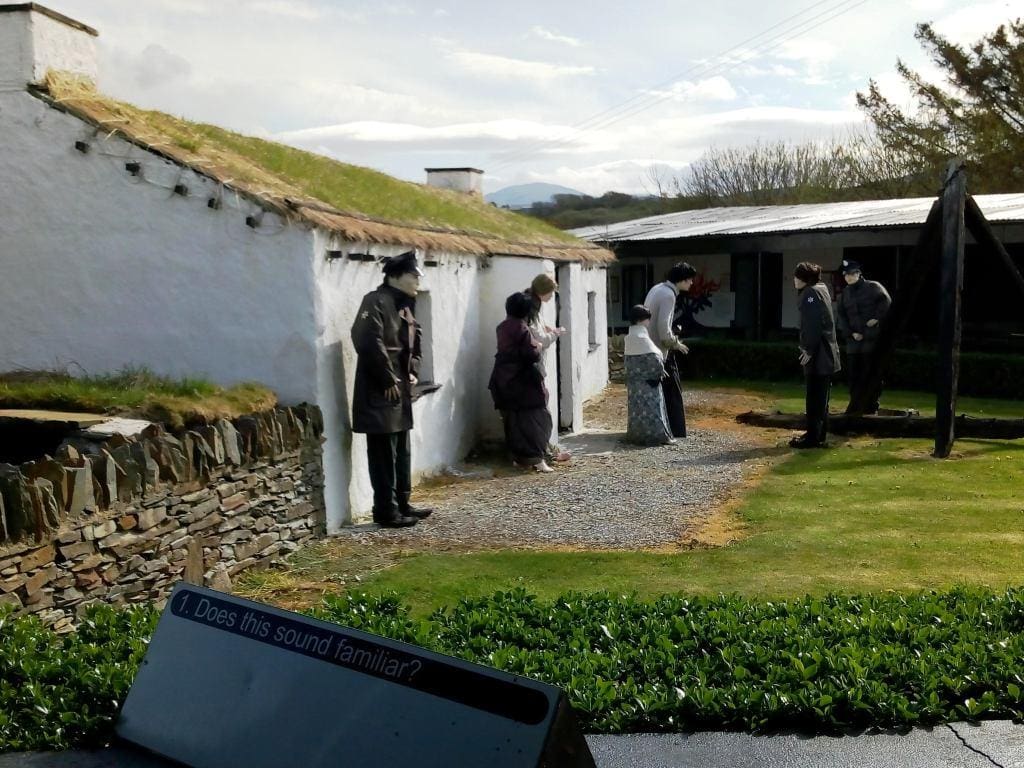
A Scalpeen
A Scalpeen – A dwelling made in abandoned ruins with whatever material was available.
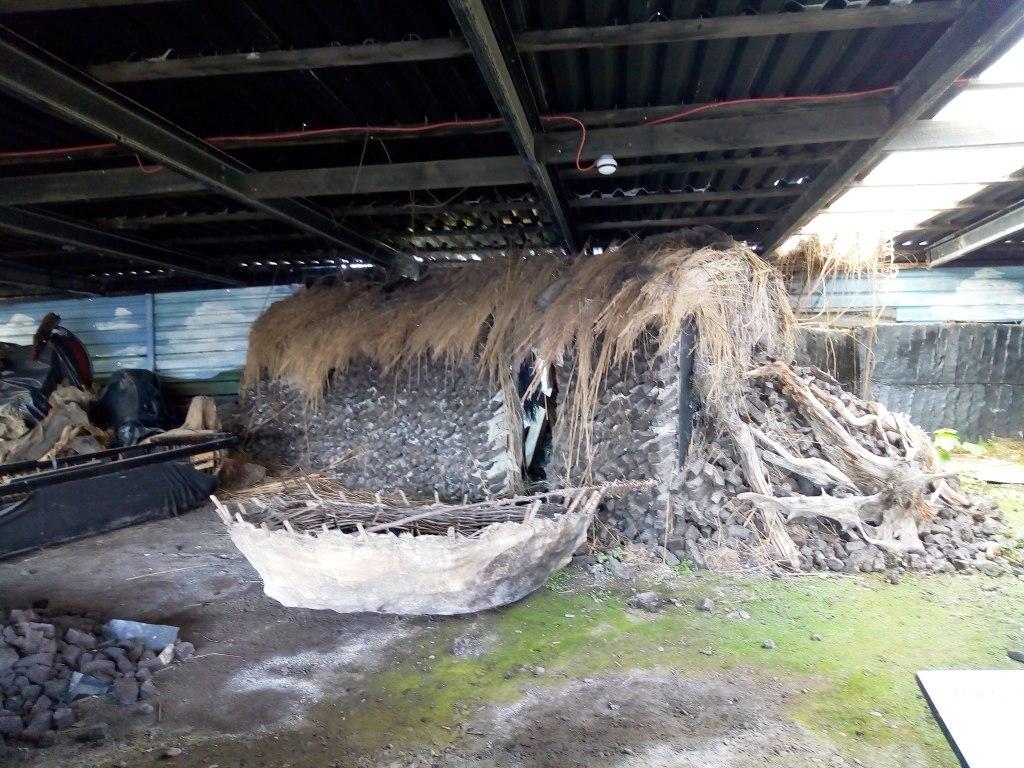
Turf Cottage
The Turf Houses are buildings that date back to the ninth century, built of wood and stone and then covered with a thick blanket of turf, which can withstand up to 70 years.
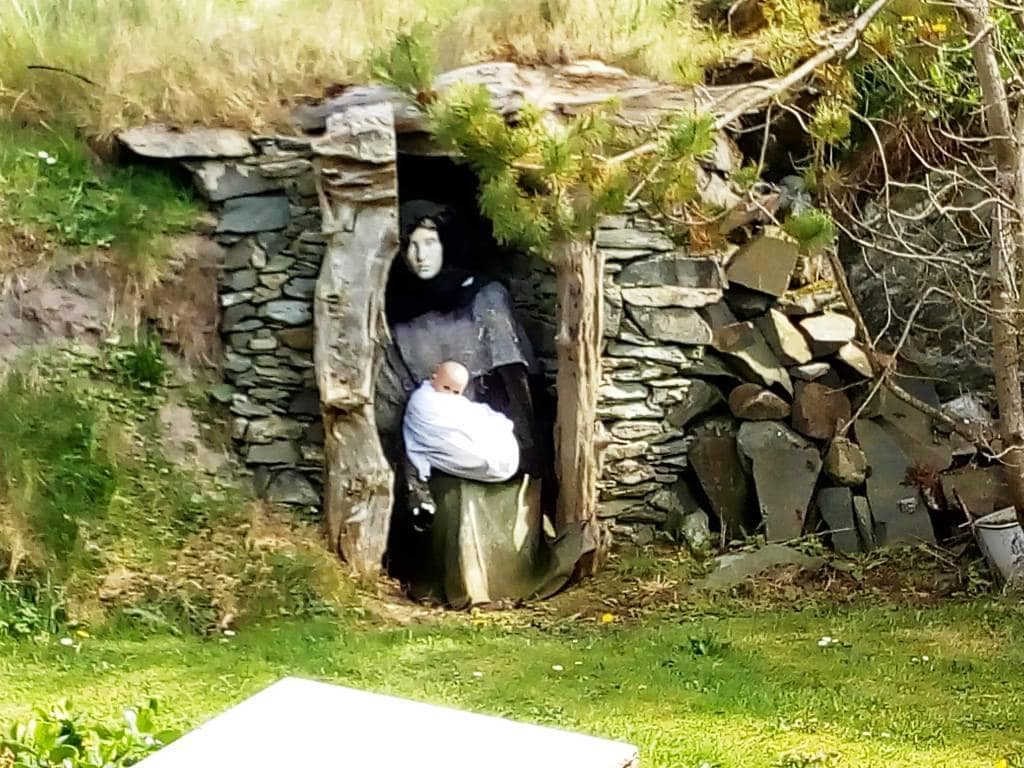
The Orange Hall
The Orange Order celebrates the civil and religious privileges conferred on Protestants in Ireland by William of Orange who became King of England, Scotland, and Ireland in the Glorious Revolution of 1688. The Order regularly commemorates the victories of William III and his forces during the War in Ireland in the early 1690s, especially the Battle of the Boyne.
The Orange Hall was a meeting place for the Orange Order who were all protestant and denied privileges to the catholic population of Ireland.
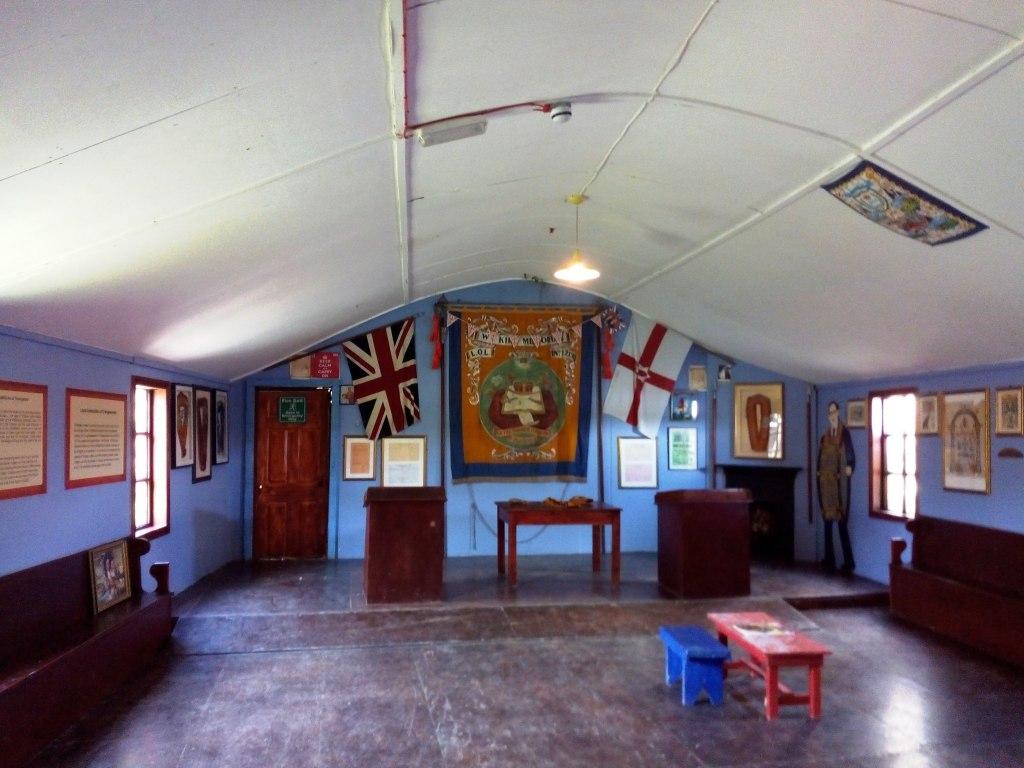
Beyond its educational value, the Doagh Famine Village plays a crucial role in preserving Ireland’s history and cultural heritage. By meticulously reconstructing the physical environment and offering an immersive experience, the village ensures that the memory of the famine remains alive and relevant for future generations.
The museum also raises awareness about the profound impact of the famine on Irish society, emphasizing its lasting consequences on population, culture, and emigration patterns. By providing historical context and personal stories, the village fosters empathy and understanding among visitors, encouraging them to reflect on the human cost of such a catastrophic event.
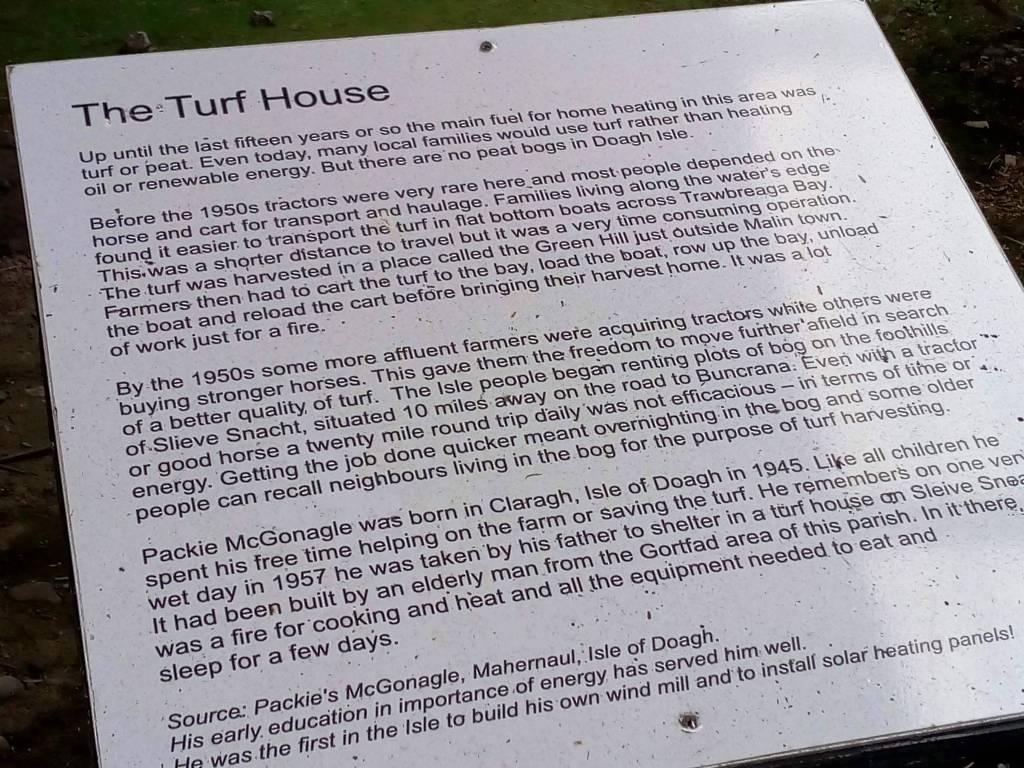
In addition to its historical focus, the Doagh Famine Village serves as a platform for dialogue and discussion about contemporary issues related to poverty, social inequality, and food security. Through educational programs, events, and collaborations with academic institutions, the village actively engages with the community to explore the relevance of the famine’s legacy in today’s world.
Donegal’s Lapland at Doagh Famine Village
In the winter months, the Doagh Famine Village becomes Donegal’s Lapland. You and the kids can enjoy a show where the Elves explain the story of Christmas and Santa makes his grand entrance down the chimney. The next stop is Santa’s Village and a stop at the toy factory where each child can choose a gift. The Village includes a stable with a crib, Post Office, Santa’s Sleigh and Santa’s Toy store. You can also have photos taken with Santa.
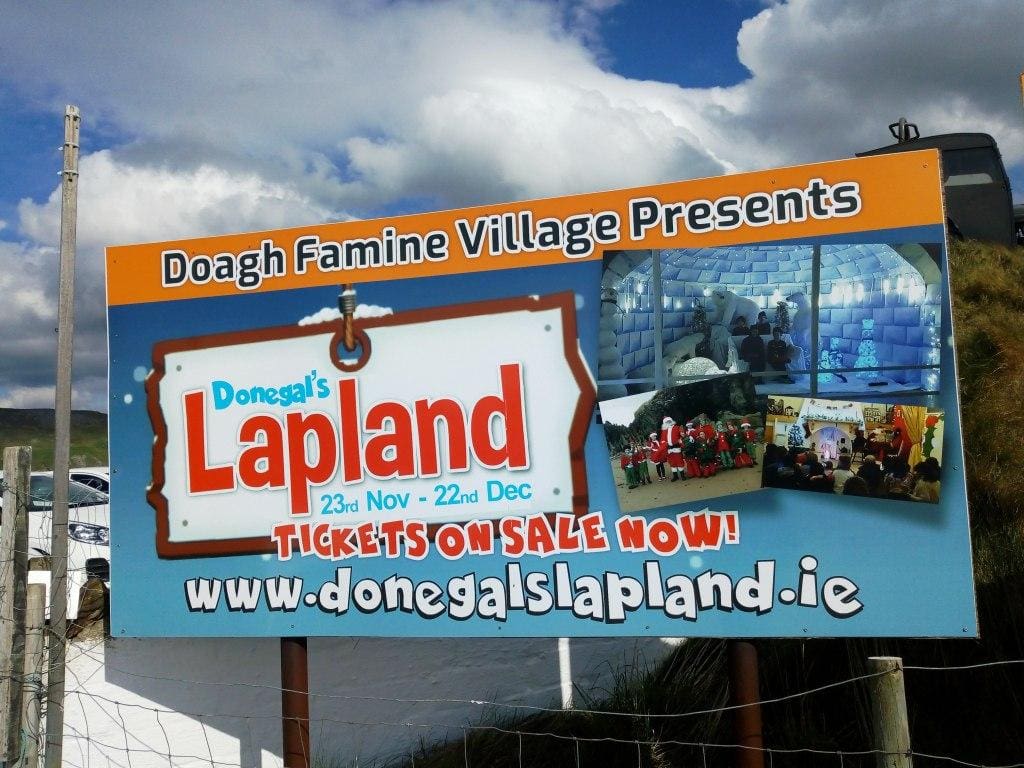
The Doagh Famine Village in Donegal is a powerful and poignant reminder of the devastating era of the Great Irish Famine and a wonderful quirky trip through Irish history.
Through its reconstructed dwellings, guided tours, and interactive exhibits, the village provides visitors with a greater understanding of the hardships faced by the Irish people during the famine and a much deeper understanding of Irish culture.
Pin it to save it
